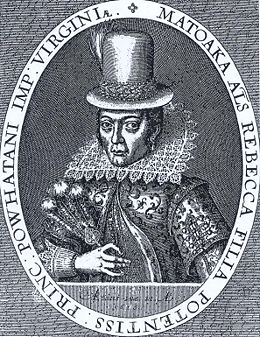Acculturation
Acculturation is the obtainment of culture by an individual or a group of people. The term originally applied only to the process concerning a foreign culture, from the acculturing or accultured recipient point of view, having this foreign culture added and mixed with that of his or her already existing one acquired since birth. Acculturation is the exchange of cultural features which result when groups come into continuous firsthand contact. Either or both groups of the original cultural patterns may be changed a bit, but the groups remain distinct overall. Differs from diffusion and can be voluntary or forced. It is a second mechanism of cultural change. Acculturation involves different levels of destruction, survival, domination, resistance, modification, and adaptation of native cultures following interethnic contact.
However, the term now has come to mean, in addition, the child-acquisition acculturation of native culture since infancy in the household. A child's learning of its first culture is also called enculturation or merely socialization.
The traditional definition sometimes differentiates between acculturation by an individual (transculturation) and that by a group - usually very large (acculturation).
The old and the new additional definitions have a boundary that blurs in modern multicultural societies, where a child of an immigrant family might be encouraged to acculturate both the dominant also well as the ancestral culture, either of which may be considered "foreign", but in fact, they are both integral parts of the child's development.
Group foreign-origin acculturation
Massive intake of another culture's traits is the most classical and narrow definition of "acculturation". Such acculturation may be adequately adapted into another's, modernizing and advancing it through the inflow of technology or the enrichment of literature. For example,
- The Chinese written language (Hanzi) was taken, with various degrees of modification by places that previously have no written records: Japan (as Kanji), Korea (as Hanja), and Vietnam (as Chữ-nôm). In addition, Chinese vocabulary had also been taken throughout the history. They have therefore developed a linguistic affinity in several, though not nearly all, aspects — called the CJKV language family in computer science.
But sometimes, the acculturation has irreversible impact of damaging the recipient culture, as in the cases of:
- Many indigenous peoples, such as First Nations of Canada, Native Americans of the USA, Taiwanese aborigines, and Australian Aborigines — have mostly lost their traditional culture (most evidently language) and replaced by that of the dominant new culture.
Such later detrimental case is related to assimilation.
The term has most often described Westernization Natives having adopted to Western cultures.
pidgin is a mixed language that has developed to help communication between members of different cultures in contact. This usually occurs in situations of trade or colonialism. Pidgin English is a simplified form of English. It blends English grammar with that of a native language. This was first used in Chinese ports and similar pidgins have developed in Papua New Guinea and West Africa.
In situations of continuous contact, cultures have exchanged and blended foods, recipes, music, dances, clothing, tools, and technologies.
Transculturation
Main article: Transculturation
Transculturation, or individual foreign-origin acculturation, is on a smaller scale with less visible impact.
This most often occurs to first-generation immigrants, for whom transculturation is most difficult, due to the lack of precedents in the family. The speed of transculturation varies, depending on the recipient's interest and the presence of a motivation.
Another common, but less lasting, acculturation effects occur after a traveller spent a while in a foreign place. S/he may pick up some regional vocabulary, especially if the languages are in the same family.
Native-origin acculturation
A child may learn one or more traditions(multicultural family of immigrants) from birth, usually from the family (blood or adopted), in particularly the parents.
Inevitably, with each generation, the dominant culture becomes more and more the dominantly accultured one for the immigrants' descendants.
History of Acculturation
Early written codes of law, for example, the Old Testament law of Moses, or the Babylonian law of Hammurabi, acted to stabilize cultural practices and reduce acculturative changes. Probably the first academic account of acculturation appears in Plato's Laws, written in the 4th century B.C.E., in which he argued that humans have a tendency to imitate strangers and a tendency to like to travel, both of which introduce new cultural practices. Plato argued that this should be minimized to the degree possible.
J.W. Powell is credited with coining the word "acculturation," first using it in an 1880 report by the US Bureau of American Ethnography. In 1883, Powell defined "acculturation" to be the psychological changes induced by cross-cultural imitation.
External links
- Examples of traditional definition: Palomar Community College
Kottak, Conrad Phillip (2005) Windows on Humanity, pages 209, 423. McGraw Hill, New York.
Credits
New World Encyclopedia writers and editors rewrote and completed the Wikipedia article in accordance with New World Encyclopedia standards. This article abides by terms of the Creative Commons CC-by-sa 3.0 License (CC-by-sa), which may be used and disseminated with proper attribution. Credit is due under the terms of this license that can reference both the New World Encyclopedia contributors and the selfless volunteer contributors of the Wikimedia Foundation. To cite this article click here for a list of acceptable citing formats.The history of earlier contributions by wikipedians is accessible to researchers here:
The history of this article since it was imported to New World Encyclopedia:
Note: Some restrictions may apply to use of individual images which are separately licensed.
